Aquatic Invertebrates
Media
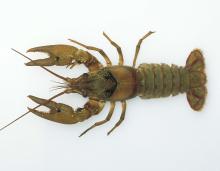
Species Types
Scientific Name
About 38 species in Missouri
Description
Crayfish are freshwater aquatic invertebrates that look a lot like small lobsters, to which they are related. There are about 38 species of crayfish in Missouri.
Media
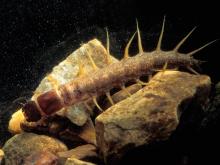
Species Types
Scientific Name
Chauliodes, Neohermes, and Nigronia spp. (in eastern US)
Description
Fishfly larvae look a lot like their cousins the hellgrammites, but they lack cottony or hairy gill tufts along the abdomen, and they have 2 short, fleshy tails at the hind tip.
Media

Species Types
Scientific Name
Corydalus cornutus
Description
Hellgrammites are the aquatic larval form of eastern dobsonflies. They are fiercely predaceous and look a little like centipedes. Anglers often use them as bait.
Media
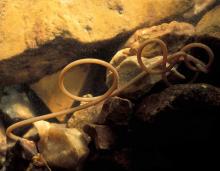
Species Types
Scientific Name
About 350 species scientifically described.
Description
Adult horsehair worms can be nearly 3 feet long and live in water. They are practically featureless, smooth, aquatic worms that writhe into knots and curls.
Media
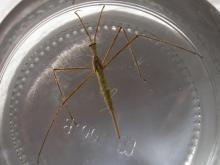
Species Types
Scientific Name
Ranatra spp. and Nepa apiculata
Description
Water scorpions remain still, looking like a random bit of plant material. Then they suddenly grab their prey and deliver disabling fluids with a quick jab of their knifelike beak.
Media

Species Types
Scientific Name
Dugesia, Planaria, and other genera
Description
Unlike their parasitic cousins in the flatworm group, turbellarians, or planarians, are tiny carnivores or detritus-eaters that glide smoothly across submerged leaves and other objects.
Media
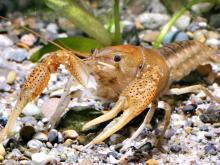
Species Types
Scientific Name
Procambarus acutus
Description
Adult White River crawfish are usually a deep burgundy red with a black V-shaped stripe on the abdomen. Juveniles are gray with dark spots scattered over the carapace. In Missouri, this species mostly occurs in the Bootheel and north along the Mississippi River.
Media
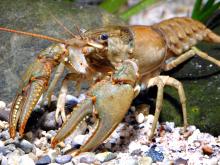
Species Types
Scientific Name
Faxonius virilis (formerly Oronectes virilis)
Description
The virile crayfish is large, reddish brown or green, and lacks prominent markings. The pincers are green with orange tips and are studded with whitish knobs. Paired dark blotches run along the abdomen. This species is widespread.
Media
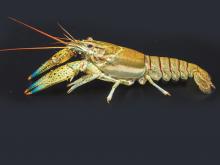
Species Types
Scientific Name
Faxonius nais (formerly Orconectes nais)
Description
The water nymph crayfish is normally found in streams but can also be found in a variety of other aquatic habitats. It is greenish brown or brown with no prominent markings. Its known distribution in Missouri is spotty.
Media
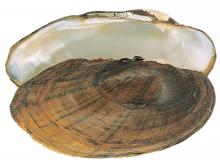
Species Types
Scientific Name
Lampsilis siliquoidea
Description
The fatmucket was a favorite species harvested for the button industry in the early 1900s.
See Also
About Aquatic Invertebrates in Missouri
Missouri's streams, lakes, and other aquatic habitats hold thousands of kinds of invertebrates — worms, freshwater mussels, snails, crayfish, insects, and other animals without backbones. These creatures are vital links in the aquatic food chain, and their presence and numbers tell us a lot about water quality.





















